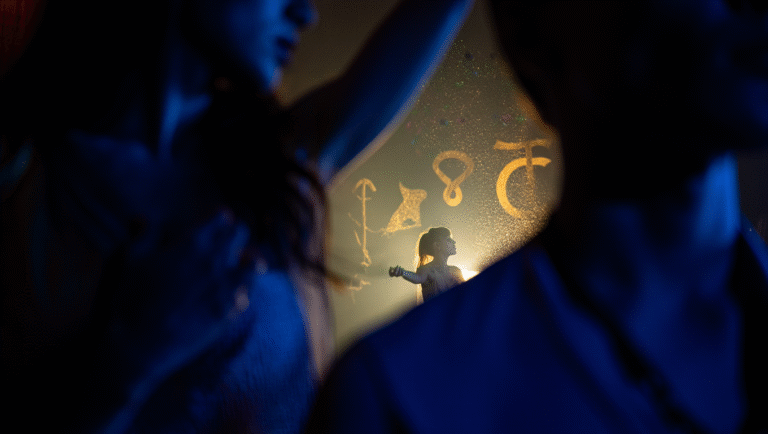How I Read Human Design Charts for Teams
Human Design. It sounds a bit like a Silicon Valley startup or maybe some sci-fi self-improvement program. But in reality, it’s a fascinating fusion of ancient wisdom and modern personality analysis—like Myers-Briggs, astrology, and the I Ching had a very data-driven baby. And while most people use it for personal growth, in the last two years I’ve been using Human Design charts to help project teams work better together, especially in high-stress corporate environments.
Context: Why Bother with Human Design for Teams?
Let’s be real: Team dynamics can make or break a project. Even a group of super-smart, well-intentioned professionals can get stuck in endless meetings, misunderstandings, and (my personal pet peeve) passive-aggressive emails. Sometimes a little extra insight—beyond what you see on a résumé—can help unlock smoother collaboration.
“I wasn’t looking for cosmic secrets. I just wanted less friction and more flow in my teams.”
Enter Human Design. It’s not about telling people what to do, but about providing a fresh lens for understanding how each person operates best. And yes, it can be done in 15 minutes per person, with tools you probably already have (internet, spreadsheet, coffee).
Case Study: The Launch Team That Couldn’t Click
Last year, I consulted for a fintech startup prepping for a major product launch. The team: 7 people, all talented, but the workflow was… chaotic. Think: missed deadlines, one person doing all the talking, and two others quietly resenting every Slack message. The founder wanted less drama, more momentum.
Here’s exactly what I did, and what you can try with your own team (even if they think “Human Design” sounds like a TEDx talk they’d skip).
15-Minute Human Design Chart Setup for Teams
- Collect birth data (date, time, place) from each team member. Pro tip: set up a simple spreadsheet—no one likes a million back-and-forth emails.
- Generate charts using a reliable free site like mybodygraph.com or geneticmatrix.com. (Most people are curious enough to check their own chart, but you can do it for them.)
- Identify each person’s Type (Generator, Manifestor, Projector, or Reflector). These are like “operating systems”—not good/bad, just different styles.
- Note the Authority (aka “decision-making style”). Is someone best with gut responses? Or do they need more time to reflect?
- Quickly scan Profiles (the “numbers” like 2/4, 5/1, etc.) for insights about communication and energy.
- Map out strengths & red flags in one shared document. Keep it neutral and actionable (“Tends to need quiet time after meetings,” not “Can’t stand group work”).
Cheat Sheet: Human Design Types & Team Roles
| Name | Key Feature | Team Fit | Famous Example |
|---|---|---|---|
| Generator | Reliable energy, needs meaningful work | Steady contributors, builders | Oprah Winfrey |
| Manifestor | Initiates, independent, sparks change | Idea starters, project initiators | JK Rowling |
| Projector | Sees systems, guides others | Advisors, strategy, feedback | Barack Obama |
| Reflector | Highly sensitive, mirrors group energy | Team barometer, big-picture insights | Sandra Bullock |
Note: The majority of people are Generators or Manifesting Generators, so don’t expect a perfect “balanced” team.
What I Learned (and What Actually Changed)
In the fintech case, we discovered:
- 3 Generators (great at getting things done, but burned out by unclear priorities)
- 2 Projectors (needed to be invited to share feedback, otherwise went silent)
- 1 Manifestor (kept trying to take over, then got frustrated when others hesitated)
- 1 Manifesting Generator (juggled too many tasks, needed more autonomy)
*What shifted?* Meetings became shorter, with each person owning tasks that matched their strengths. The Manifestor was given space to pitch ideas first, then the Projectors helped refine the plan. Generators got clear “to do’s” instead of vague brainstorms.
Within a month, internal surveys showed a 25% drop in reported “team tension.” The product launched on time. No one had to wear a crystal necklace (unless they wanted to).
Step-by-Step: Your 15-Minute Team Human Design Ritual
- Ask your team for birth info. Yes, some will roll their eyes. Frame it as a fun experiment (“like Myers-Briggs, but with cooler graphics”).
- Use mybodygraph.com or geneticmatrix.com to generate charts. (Bonus: Both sites are free for basic charts.)
- Make a table with everyone’s Type and Authority. Example:
| Name | Type | Authority | Key Insight |
|---|---|---|---|
| Alex | Generator | Sacral | Needs to respond, not initiate |
| Sara | Projector | Splenic | Benefits from invitations, trust intuition |
| Mike | Manifestor | Emotional | Needs to inform before acting |
- Share short summaries of what each Type/Authority means. No jargon, just “Alex works best when others bring problems to him.”
- Experiment with new workflows for 2 weeks. For example, let Projectors lead debriefs, or let Manifestors pitch first in meetings.
- Debrief. Ask what worked, what didn’t. Keep what helps. Drop the rest.
Recommended Tools & Resources
- mybodygraph.com — free, easy-to-read charts
- geneticmatrix.com — advanced features for paid users
- “The Definitive Book of Human Design” — for deeper dives
- Templates: Google Sheets or Notion for team mapping (search “Human Design team template” for free downloads)
Quick Checklist (Save or Screenshot)
- ☑ Gather team birth info
- ☑ Generate Human Design charts
- ☑ Note Type and Authority for each member
- ☑ Create one-page summary for team
- ☑ Share insights in a team meeting (keep it light!)
- ☑ Test new roles/workflows for 2 weeks
- ☑ Debrief and adjust as needed
Is Human Design Right for Every Team?
Pros:
- Quick, practical insights (not just “feel good” fluff)
- Easy to test—no big investment needed
- Helps introverts and outliers feel seen
Cons:
- Some may be skeptical or uncomfortable sharing birth data
- Can get jargon-heavy if not simplified
- Not a magic bullet—won’t fix a toxic boss
Who is this for? Teams open to self-discovery, managers looking for new ways to build trust, anyone bored with traditional team-building exercises.
Final Thoughts: Keep It Useful, Keep It Honest
Human Design isn’t about putting people in boxes. It’s about giving teams another set of tools to understand each other, reduce friction, and maybe even enjoy the process a bit more. The best part? You don’t have to believe in anything mystical—just be curious and open to experimentation.
Some links in this post may be affiliate links. If you buy something, it won’t cost you extra, but it helps support this site and its free resources. Thank you!







